11 fantastiche città da visitare nel Nord Italia (oltre a Venezia e Como)
From Trieste to Pavia, here are some of the best Northern Italian cities to consider for your next trip to the Belpaese.
Da Trieste a Pavia, ecco alcune delle più belle città del Nord Italia per il tuo prossimo viaggio nel Belpaese.
Think Northern Italy and big-hitting names like Venice or Como probably spring to mind. While these spots are popular for a reason, plenty of other cities are equally impressive and offer lifetime memories without the huge crowds.
Quando si pensa al Nord Italia, il più delle volte la mente corre a luoghi famosi come Venezia o Como. Tuttavia, anche se queste città hanno tutti i motivi per essere così popolari, ce ne sono molte altre altrettanto interessanti che regalano magnifici ricordi di viaggio senza le grandi folle delle mete più rinomate.
From cosmopolitan centres that immerse visitors in the country’s history to the perfect places for memorable food expeditions, the north of Italy has something for every traveller. Plus, its varied natural and urban landscape guarantees rich experiences and new perspectives of the country.
Da destinazioni con un fascino marcatamente cosmopolita che immergono il visitatore nella storia d’Italia a luoghi di una grande tradizione culinaria perfetti per spedizioni enogastronomiche, in Nord Italia c’è qualcosa per ogni viaggiatore. Inoltre, il suo variegato paesaggio urbano e naturale garantisce esperienze uniche che permettono di scoprire l’Italia da nuovi punti di vista.
So, here are eleven amazing Northern Italian cities to visit on your next trip to Italy. You just need to pick the best places and start planning!
Ecco dunque 11 meravigliose città da non perdere nel Nord Italia. Non devi far altro che scegliere i luoghi che più ti incuriosiscono e iniziare a pianificare il tuo prossimo viaggio in Italia!
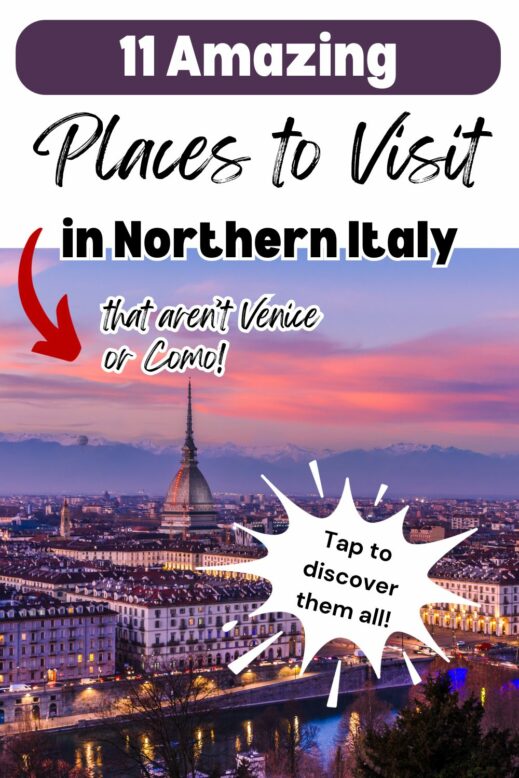
This article is part of our Bilingual Blog series, where we share useful information and tips about non-language related aspects of Italian culture such as food, music, travel and more. These articles have been written in Italian and English to give our readers the opportunity to improve their reading skills whilst learning something new about Italy.
Best for venturing off the beaten path: Pavia
Pavia, per una fuga lungo gli itinerari meno battuti
Only 30 km south of Milan, Pavia is a wonderful place for a day trip to escape hectic city life. This ancient university town is an exceptional destination for historic sights outside the usual tourist routes. These include a 14th-century castle, impressive medieval towers, and a stunning covered bridge. Leonardo da Vinci helped design the mighty cathedral (whose dome is the third largest in Italy), while the Holy Roman Emperor Frederic Barbarossa received the crown in the Basilica of San Michele, one of the finest examples of Lombard-Romanesque architecture.
Don’t miss: the Certosa di Pavia, a 14th-century monastery filled with impressive art and inhabited by a small Cistercian community.
A soli 30 km a sud di Milano, Pavia è una splendida destinazione per una gita fuori porta lontano dal caos metropolitano. Questa antica cittadina universitaria è il luogo perfetto per scoprire interessanti attrazioni storiche fuori dalle usuali rotte turistiche. Tra di esse vi sono un castello del XIV secolo, magnifiche torri medievali e un bellissimo ponte coperto. Leonardo da Vinci contribuì al progetto dell’imponente cattedrale (la cui cupola è la terza più grande in Italia), mentre Federico Barbarossa fu incoronato imperatore del Sacro Romano Impero nella Basilica di San Michele, uno dei migliori esempi di architettura romanico lombarda.
Da non perdere: la Certosa di Pavia, un monastero del XIV secolo ricco di opere d’arte che ospita una piccola comunità di monaci cistercensi.
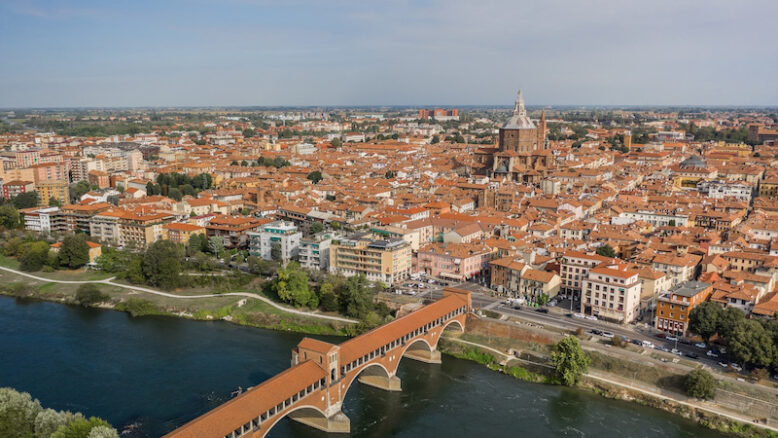
Best for unexpected art: Parma
Parma e il suo sorprendente patrimonio artistico
Parma is best known for its culinary delights – which earned it a spot among UNESCO Creative Cities for gastronomy – but it also has an impressive art and culture scene. There are many treasures to explore in Parma, once the heart of the old Farnese Duchy. The Cathedral’s dome was painted by Correggio, while the city’s National Art Gallery showcases fabulous works by Leonardo, Van Dyck, Tintoretto, and many others.
Music plays a big role in Parma since composer Giuseppe Verdi was born nearby, and his legacy is seen in many buildings and events. The most important is the Verdi festival taking place every autumn at the Regio Theatre, one of Italy’s most prestigious opera houses.
Don’t miss: a visit to the spectacular Farnese Theatre, which is entirely made of wood.
Parma è nota per le sue prelibatezze – che le sono valse il titolo di Città Creativa UNESCO per la gastronomia – ma è anche una città ricchissima di arte e cultura. Un tempo cuore del ducato governato dalla dinastia dei Farnese, Parma ha tanti tesori da scoprire, tra cui la cupola del duomo dipinta da Correggio e le opere di maestri quali Leonardo, Van Dyck e Tintoretto esposti alla Galleria Nazionale.
La musica ha un ruolo importante in città: il grande compositore Giuseppe Verdi nacque in queste zone e sono tanti i luoghi e gli eventi che gli rendono omaggio. Tra questi, il Festival Verdi che ha luogo in autunno presso il Teatro Regio, uno dei più prestigiosi teatri lirici d’Italia.
Da non perdere: una visita al Teatro Farnese, un luogo affascinante costruito interamente in legno.

Best for archeological treasures: Brescia
Brescia e i suoi tesori archeologici
Only a few kilometres from the southern shore of Lake Garda, Brescia is one of the most surprising Northern Italian cities to visit. Its story spans over 3,000 years and left a wealth of treasures to explore. There’s a medieval hilltop castle surrounded by Venetian walls, two cathedrals, and a UNESCO-listed archaeological area with one of the best-preserved Roman buildings in northern Italy. The Santa Giulia museum complex exhibits Roman mosaics, ancient frescoes, and Lombard King Desiderius’ precious cross dating from the 9th century. Additionally, the town hosts many events throughout the year, like the Mille Miglia vintage car race.
Don’t miss: a tour of underground Brescia to see a different side of the city.
A pochi chilometri dalla sponda meridionale del Lago di Garda, Brescia è una delle città più sorprendenti del Nord Italia. Oltre 3000 anni di storia hanno lasciato tantissimi tesori da scoprire, tra cui un castello medievale in cima alla collina circondato da mura venete, ben due cattedrali e un’area archeologica patrimonio UNESCO che comprende uno degli edifici pubblici meglio conservati dell’antica Roma. Un altro luogo imperdibile è il complesso museale di Santa Giulia, che custodisce al suo interno mosaici romani, antichi affreschi e la preziosa croce del re longobardo Desiderio risalente al IX secolo. La città è sede di tanti eventi durante l’anno, tra cui la corsa di auto storiche Mille Miglia.
Da non perdere: un tour dei sotterranei di Brescia per un punto di vista diverso sulla città.

Best for old port charm: Genoa
Genova e il fascino del porto antico
Once the maritime capital of the world, Genoa has retained its unique old port character while becoming a culturally vibrant destination. Visiting the Ligurian capital is an ever-changing experience: from narrow alleys with an exotic vibe to elegant palaces listed among UNESCO World Heritage Sites, the local sightseeing list is long and varied. The old port, redesigned by Renzo Piano, is a social hub with a floating square, Europe’s largest aquarium, and lots of eateries where fish, pesto, and focaccia are the gastronomic calling cards. Genoa also makes a great base to explore the jewels of the Italian Riviera, like Camogli, Portofino, and the Cinque Terre.
Don’t miss: Castello d’Albertis, the residence of a local captain who filled it with nautical, archeological, and ethnographic artefacts he collected on his travels.
Un tempo capitale marittima del mondo, Genova ha conservato quel carattere unico di città portuale divenendo allo stesso tempo un vivace centro culturale. Visitare la capitale della Liguria è un’esperienza sempre diversa: dagli stretti vicoli che emanano un fascino esotico agli eleganti palazzi patrimonio UNESCO, l’elenco delle attrazioni locali è lungo e vario. Il vecchio porto, riqualificato da Renzo Piano, è oggi un luogo di ritrovo ricco di attrattive, tra cui una piazza galleggiante, l’acquario più grande d’Europa e molti ristoranti in cui pesce, pesto e focaccia riempiono i menù. Genova è inoltre un ottimo punto di partenza per visitare i gioielli della Riviera ligure, tra cui Camogli, Portofino e le Cinque Terre.
Da non perdere: il Castello d’Albertis, la dimora di un capitano genovese che la riempì di preziosi reperti nautici, archeologici ed etnografici collezionati durante i suoi viaggi.
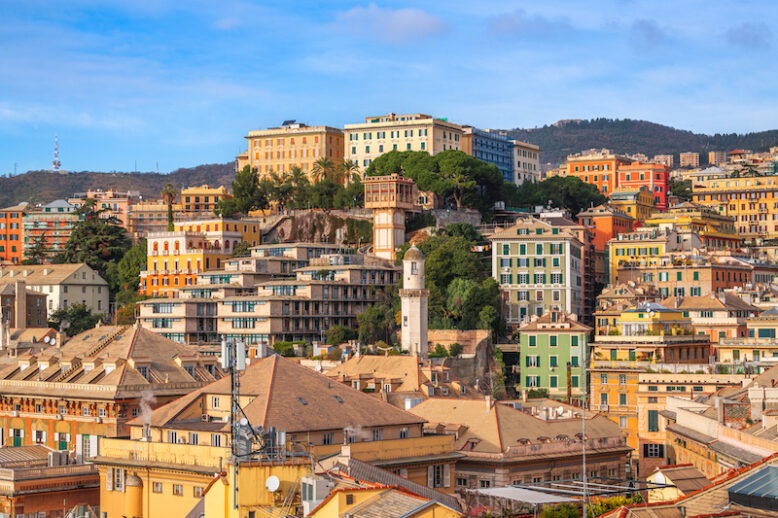
Best for cosmopolitan vibes: Trieste
Trieste e il suo animo cosmopolita
Close to the Slovenian and Croatian borders, the capital of the Friuli Venezia Giulia region is a beautiful port city with a unique border-town feel. Elegant and aristocratic, Trieste wasn’t always Italian and spent 600 years under the Austro-Hungarian Empire. This is reflected in the city’s fascinating variety of architectural styles, religions, and culinary traditions. Beautifully framed by a landscape of lush greenery and karstic plateaus, Trieste is a treasure trove of unique sights. The best attractions include the Miramare Castle, the grandiose Piazza Unità d’Italia, and the many historic cafés that welcomed illustrious intellectuals like Joyce and Svevo.
Don’t miss: the Giant Cave, a massive karst cave that was inhabited since the Neolithic Era.
Vicino al confine con Slovenia e Croazia, la capitale del Friuli Venezia Giulia è una bellissima città portuale con l’atmosfera unica delle città di frontiera. Elegante e aristocratica, Trieste non è sempre stata italiana. Per ben 600 anni ha fatto parte dell’impero austro-ungarico e ciò si riflette nell’incredibile varietà di architetture, religioni e tradizioni culinarie della città. Circondata da un meraviglioso paesaggio naturale e altipiani carsici, Trieste è uno scrigno di tesori unici. Le principali attrazioni includono il Castello di Miramare, la grandiosa Piazza Unità d’Italia e i tanti caffè storici un tempo frequentati da illustri intellettuali quali Joyce e Svevo.
Da non perdere: la Grotta del Gigante, un’enorme grotta carsica che fu abitata sin dal Neolitico.
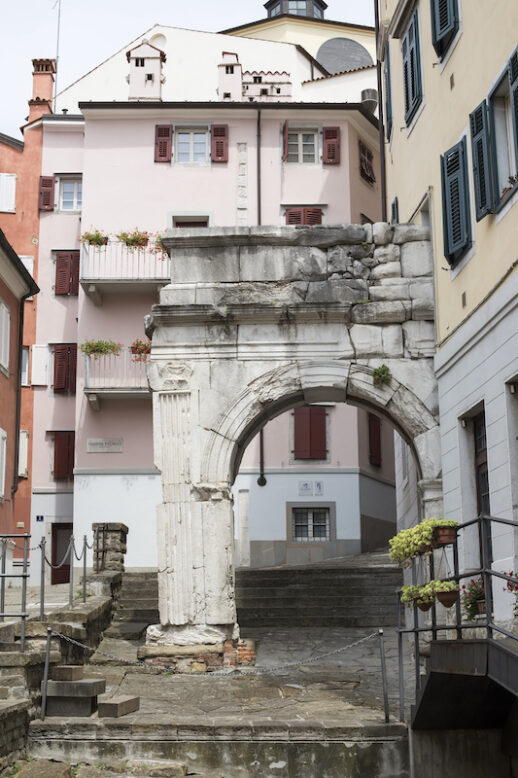
Best for medieval beauty: Bergamo
Bergamo, per un tuffo nel medioevo
Bergamo stands out among the very best Northern Italian cities for its elegant Città Alta, the upper historic center. This is the beating heart of the city, scenically surrounded by the mighty Venetian Walls built in the 16th century when Bergamo belonged to the Republic of Venice. In Bergamo’s old town, Medieval and Renaissance buildings are tightly clustered around Piazza Vecchia, the main square. No visit to Bergamo is complete without sampling the local Polenta E Osei cake, whose recipe is over a century old.
Don’t miss: a scoop of stracciatella ice cream at Caffè La Marianna, where it was first served in 1961.
Tra le migliori città del Nord Italia, Bergamo si distingue per il suo elegante centro storico, la Città Alta. Circondato da possenti Mura Venete costruite nel XVI secolo quando Bergamo apparteneva alla Repubblica di Venezia, il cuore pulsante della città presenta una fitta rete di edifici medievali e rinascimentali sviluppati intorno a Piazza Vecchia, la piazza principale. Nessuna visita può dirsi completa senza aver assaggiato Polenta E Osei, un dolce locale la cui ricetta ha più di un secolo.
Da non perdere: una pallina di gelato alla stracciatella al Caffè La Marianna, dove fu inventato nel 1961.
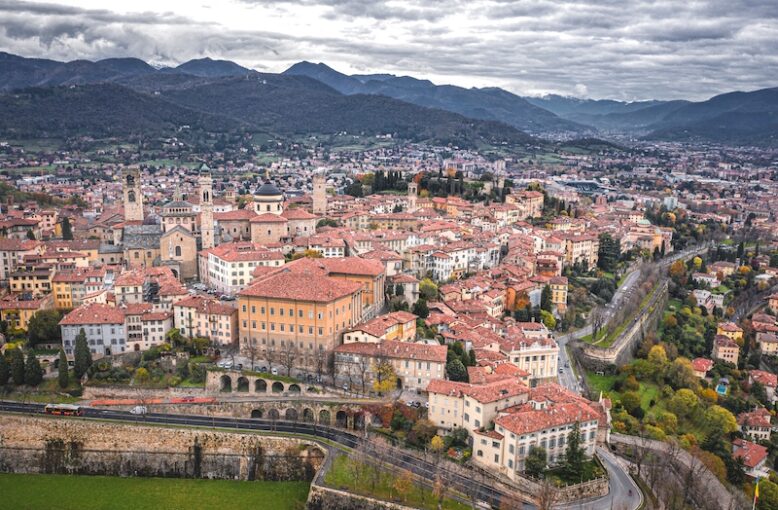
Best for alpine landscapes: Bolzano
Bolzano e iI suo paesaggio alpino
Nestled at the foothills of the Dolomites in the autonomous region of South Tyrol in Italy, Bolzano is a fascinating alpine town where Italian and German influences coexist. This incredible mix of cultures brought a unique feel to the city, making it totally different from the image of Italy we are used to.
The town is known for its award-winning cuisine, outstanding restaurants, and notable attractions that include a glacier mummy from the Copper Age, frescoes from the Giotto school, and magnificent castles. Bolzano is the gateway to South Tyrol’s unique wine route and famous Lake Braies.
Don’t miss: the enchanting Christmas markets in Piazza Walther.
Adagiata ai piedi delle Dolomiti, nella regione autonoma dell’Alto Adige, Bolzano è una bellissima cittadina di montagna dove convivono due anime: una italiana e una tedesca. Questo fantastico mix culturale ha creato un’atmosfera unica, rendendo la città totalmente diversa dall’immagine dell’Italia a cui siamo abituati.
Bolzano è nota per la sua cucina pluripremiata, gli ottimi ristoranti e attrazioni uniche, tra cui una delle mummie più antiche al mondo, affreschi della scuola di Giotto e magnifici castelli. Bolzano è un’ottima base per esplorare la Strada del Vino dell’Alto Adige e il famoso Lago di Braies.
Da non perdere: gli splendidi mercatini di Natale in Piazza Walther.
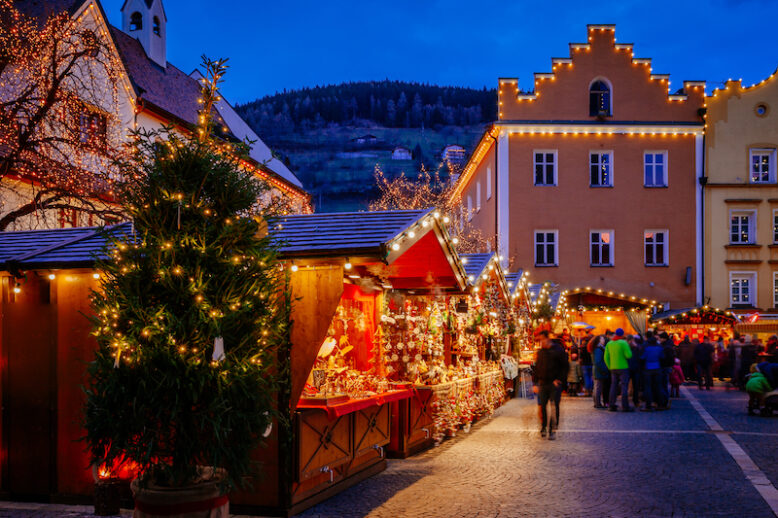
Best for Italian history: Turin
Torino e la storia d’Italia
Although it often remains off the tourists’ radar, Turin deserves a special place among the best cities to visit in Northern Italy. This elegant Piedmontese city surrounded by the Alps became Italy’s first capital after the country’s unification in 1861. The many events and revolutionary ideas that led to this historic milestone are beautifully explained at the Museum of the Risorgimento. Nowadays, Turin is a cultural jewel full of fascinating museums, royal palaces, and historic cafés where the country’s legendary aperitivo was invented.
Don’t miss: the UNESCO-listed Venaria Palace, a monumental Savoy residence with Versailles-inspired gardens.
Nonostante rimanga spesso fuori dalle rotte turistiche, Torino merita un posto speciale tra le migliori città da visitare del Nord Italia. Questa elegante cittadina piemontese circondata dalle Alpi fu la prima capitale d’Italia dopo l’Unità del Paese nel 1861 e le tante vicende e idee rivoluzionarie che portarono a un tale traguardo storico possono essere approfondite al Museo del Risorgimento. Oggi Torino è un gioiello culturale ricco di fantastici musei, palazzi reali e storici caffè dove è stato inventato il famoso aperitivo italiano.
Da non perdere: la Reggia di Venaria, una monumentale residenza sabauda con giardini ispirati a Versailles, patrimonio dell’UNESCO.
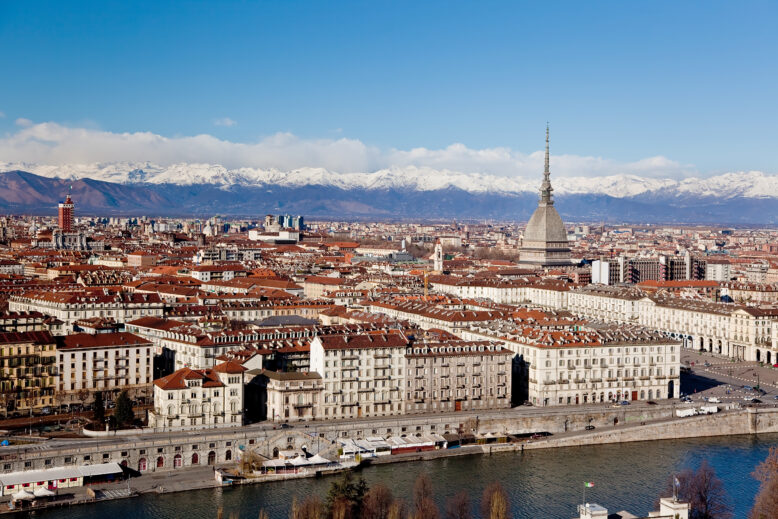
Here are some of the best things to do in Turin if you’re planning to visit!
Best for food & wine: Bologna
Bologna e i suoi gioielli enogastronomici
With a beautiful historic centre and a rich food culture, Bologna is a joy to explore. Young and vibrant, the capital city of the Emilia Romagna region hosts the world’s oldest university and 53 km of vaulted arcades that have become an icon (and a UNESCO heritage site). There are plenty of things to do in its red-brick old town, from climbing medieval towers to browsing craft workshops in the former Jewish ghetto. Bologna is also one of Italy’s most prominent cities for gastronomy, home to famous delicacies like tagliatelle al ragù, mortadella, and tortellini.
Don’t miss: the 16th-century Anatomical Theatre, completely made of wood, inside the Archiginnasio at Bologna University.
Con un bellissimo centro storico e una ricca tradizione culinaria, Bologna è una meraviglia da esplorare. Giovane e vivace, il capoluogo dell’Emilia Romagna ospita l’università più antica del mondo e 53 km di portici diventati un’icona (e patrimonio dell’UNESCO). Ci sono tante cose da fare nel suo centro storico in mattoni rossi, dalla salita sulla cima di torri medievali alla visita a laboratori artigianali nell’ex ghetto ebraico. Ma Bologna è anche una delle città italiane più importanti per la gastronomia, patria di famose prelibatezze tra cui le tagliatelle al ragù, la mortadella e i tortellini.
Da non perdere: il Teatro Anatomico, un’aula totalmente in legno creata nel XVI secolo all’interno dell’Archiginnasio dell’Università di Bologna.
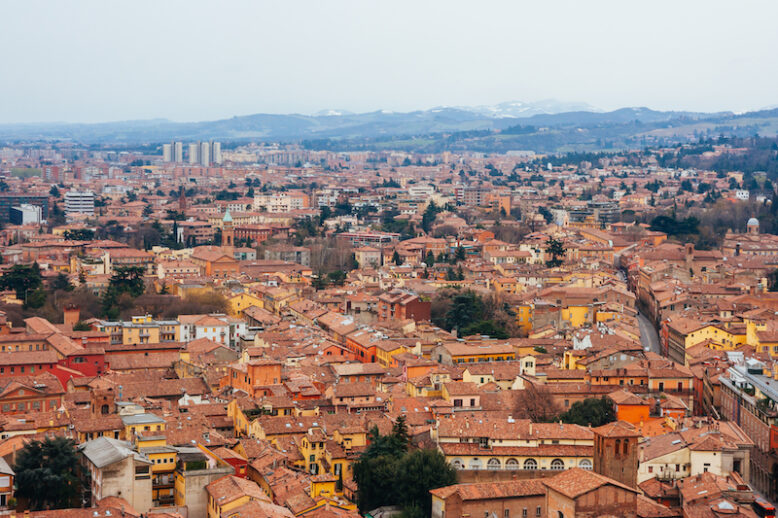
Best for a romantic escape: Verona
Verona, per una fuga romantica
Made famous as the set of Romeo and Juliet’s tragic love story, Verona is one of Italy’s most romantic cities in Northern Italy. Everything here speaks of Shakespeare’s famous characters, from the balcony where Romeo declared his love to Juliet’s secretaries’ HQ, where millions write to get advice and reveal their heartbreaks. But Verona is also a draw for history enthusiasts, who will find a stunning Roman arena, the medieval legacy of the Scaliger dynasty, and beautiful Renaissance gardens which once hosted a wool dyeing company.
Don’t miss: the sunset views from Castel San Pietro.
Resa famosa come luogo del tragico amore di Romeo e Giulietta, Verona è una delle città più romantiche del Nord Italia. Tutto qui parla dei famosi personaggi di Shakespeare, dal balcone dove Romeo dichiarò il suo amore al quartier generale delle segretarie di Giulietta, a cui milioni di persone scrivono per raccontare le loro pene d’amore e chiedere consigli. Ma Verona è anche un’ottima destinazione per gli appassionati di storia, sede di importanti attrazioni tra cui una splendida arena romana, i luoghi della signoria medievale degli Scaligeri e meravigliosi giardini rinascimentali che un tempo ospitavano un’azienda di tintura della lana.
Da non perdere: la vista da Castel San Pietro al tramonto.

Best for curious travellers: Milan
Milano, la città per viaggiatori curiosi
Among the best Northern Italian cities, Milan is undoubtedly the most intriguing. It may be considered the country’s fashion and business capital, but its beauty reveals itself only to those curious enough to see beyond the obvious. Expect secret gardens, pink flamingos, rows of pastel-coloured houses, and even vines that once belonged to Leonardo! The city is also filled with fabulous museums for every interest and all sorts of eateries, including a café designed by movie director Wes Anderson.
Don’t miss: a traditional aperitivo by the Navigli canals.
Tra le migliori città del nord Italia, Milano è senza dubbio la più intrigante. È considerata la capitale italiana della moda e degli affari, ma la sua bellezza si rivela solo a coloro che sono abbastanza curiosi da andare oltre l’ovvio. Troverai giardini segreti, fenicotteri rosa, file di case color pastello e persino viti che un tempo appartenevano a Leonardo! La città è inoltre ricca di favolosi musei dedicati a qualsiasi genere di arte e bar e ristoranti di ogni tipo, tra cui una caffetteria progettata dal regista Wes Anderson.
Da non perdere: un tipico aperitivo sui Navigli.
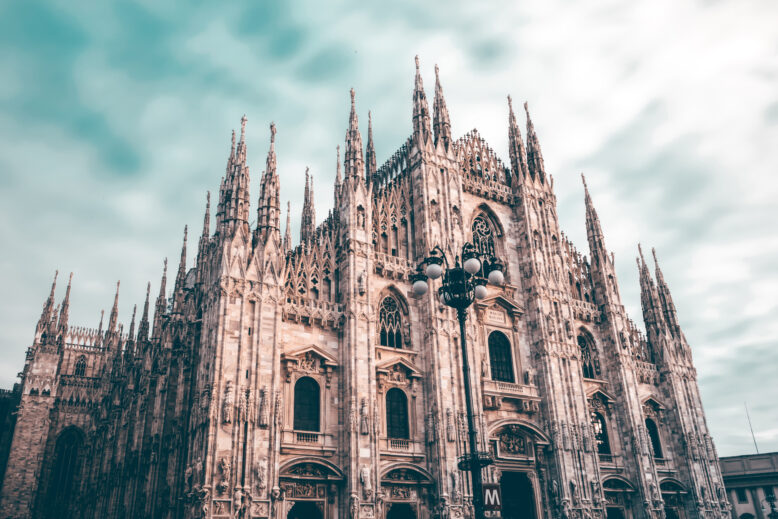
By the way, if you are interested in some of the more popular sights, why not check out this list of the best towns in Lake Como? We’re sure you won’t be disappointed! 😉


Valentina Nicastro is a travel writer in love with her home country, Italy. Having travelled widely around the globe, she realised there was more to explore closer to home and decided to put the passport aside for a while. When she is not immersed in documenting Italy, you’ll find her donning her communication consultant hat, weaving words as a content writer and bridging linguistic divides as a translator.


